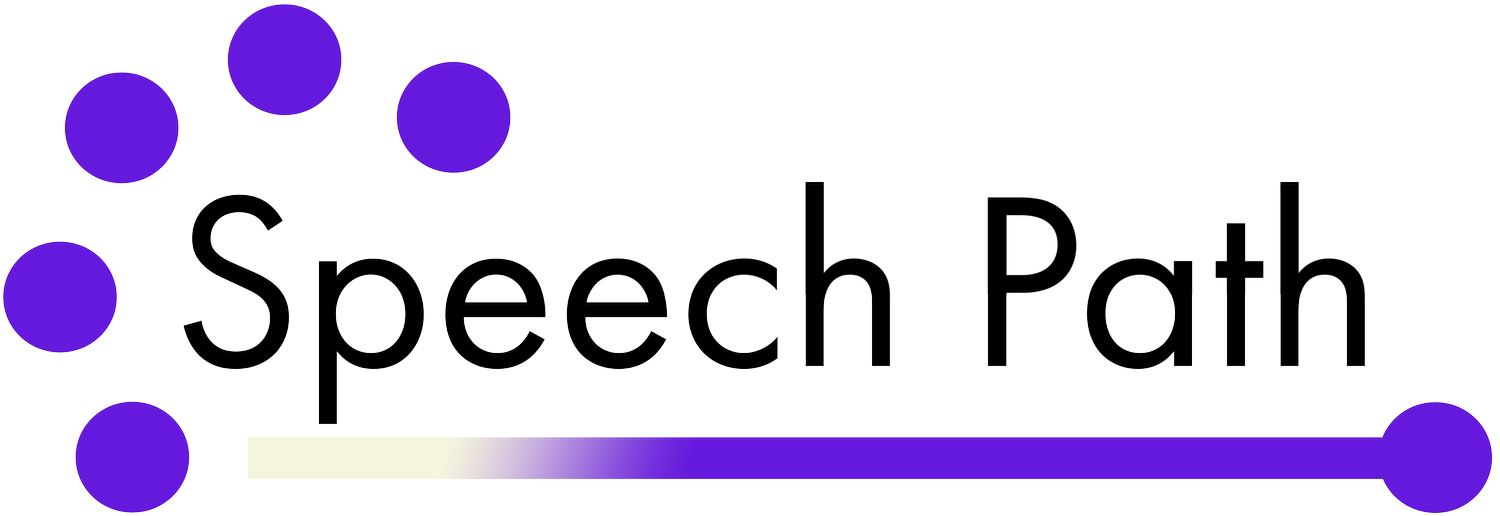Strategies to Support your Child’s Language Development
We know parents wear many hats when it comes to supporting their child, and one of those important roles relates to communication development. In fact, research shows that parents can be just as effective as, or even more effective than, speech-language pathologists in supporting their young child’s language development when they’re equipped with the right tools (Roberts & Kaiser, 2011; Rakap & Rakap, 2014; DeVeney, Hagaman, & Bjornsen, 2017; Roberts, Curtis, Sone, & Hampton, 2019). While some children and families may need ongoing support from a speech-language pathologist, we want to help parents feel confident in enriching their child’s communication development at home. We’re thrilled to help you get started by sharing this list of strategies with you.
Follow your child’s lead: Get down to your child’s eye level, tune into their activities, and let their interests guide your interaction. It's all about creating a natural and engaging communication environment!
Describe: Talk about what your child might be thinking, feeling, or doing. Try not to ask questions or give directions.
Join their play: Become your child’s play partner! Copy your child’s play actions, add sound effects, and offer ideas to extend their playtime. For example, if your child is driving a toy car, you might say “vroom!” and make the car jump over something to show them a different play action with the car.
Offer choices: Give your child a sense of control over the situation by offering choices. Show your child the options and name them. For example, you might hold a book in one hand, blocks in the other hand, and ask your child “book or blocks?”
Sing: Add pauses before high points in songs to encourage your child to participate using vocalizations, words, or gestures. For example, “the horn on the bus goes…beep!”
Read: Early on, "reading" is simply describing the pictures in a book without following the written words. Choose books that are sturdy and have large colorful pictures that are not too detailed. Encourage naming and pointing to familiar objects in the book.
Expand: If your child utters a single sound or word, build on it by adding 1-2 more sounds or words. This reinforcement helps them solidify their learning. For example, if they say "baba," you can say "baba-bee," or if they say "go," you can say "go fast." Each repetition is a stepping stone toward greater language mastery!
These strategies are your secret tools in nurturing your child's language development. Embrace them, have fun, and watch your little one's communication skills flourish.
References
Roberts, M., & Kaiser, A. (2011). The Effectiveness of Parent-Implemented Language Intervention: A Meta-Analysis. American Journal of Speech-Language Pathology, 20, 180–199.
Rakap, S. & Rakap, S. (2014). Parent-implemented naturalistic language interventions for young children with disabilities: A systematic review of single-subject experimental designs. Educational Research Review, 13, 35-51.
DeVeney, S. L., Hagaman, J. L. & Bjornsen, A. L. (2017). Parent implemented versus clinician-directed interventions for late-talking toddlers: A systematic review of the literature. Communication Disorders Quarterly, 1–10.
Roberts, M. Y., Curtis, P. R., Sone, B. J., Hampton, L. H. (2019). Association of Parent Training With Child Language Development A Systematic Review and Meta-analysis. JAMA Pediatrics, 173(7):671-680.
